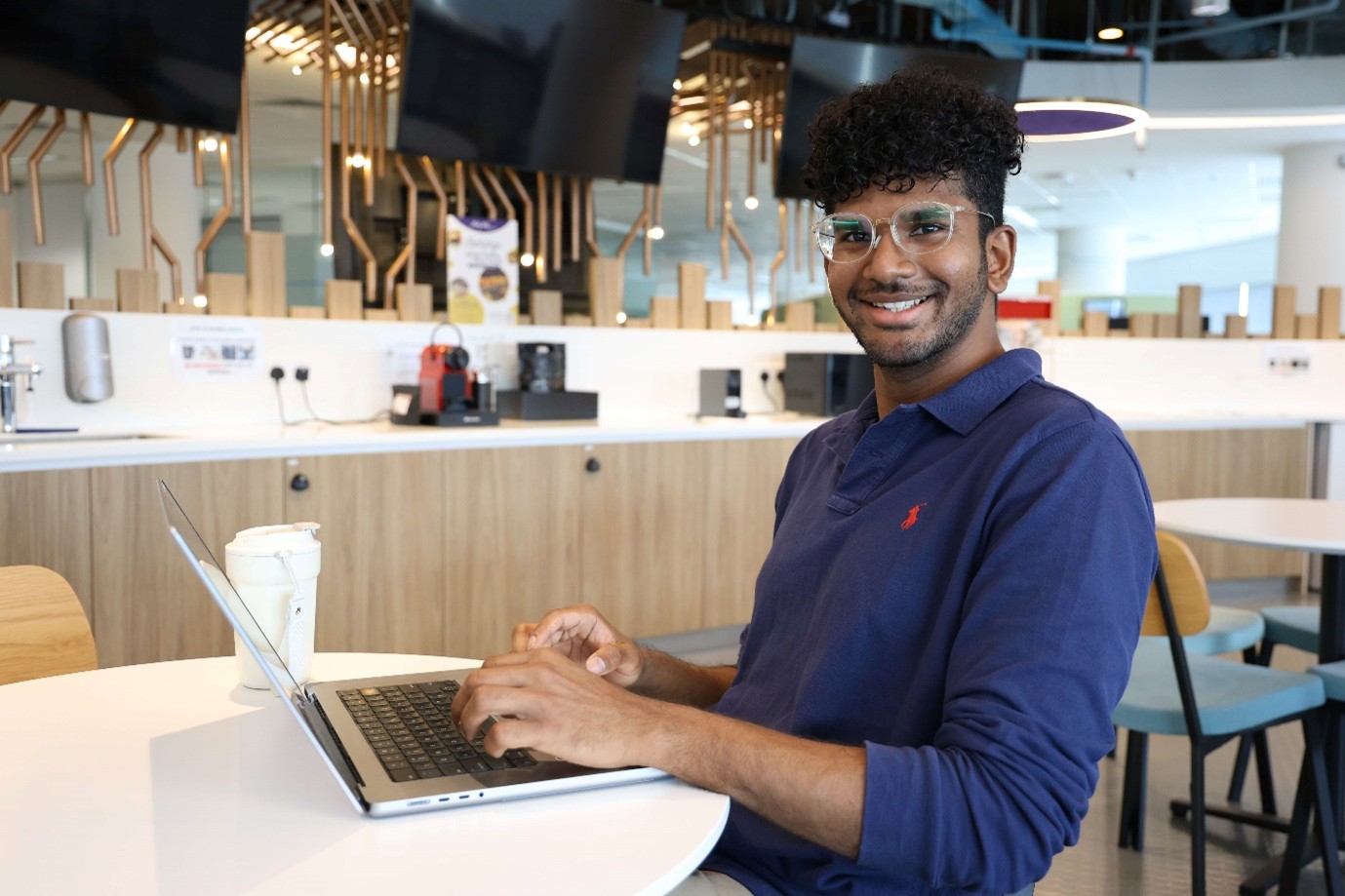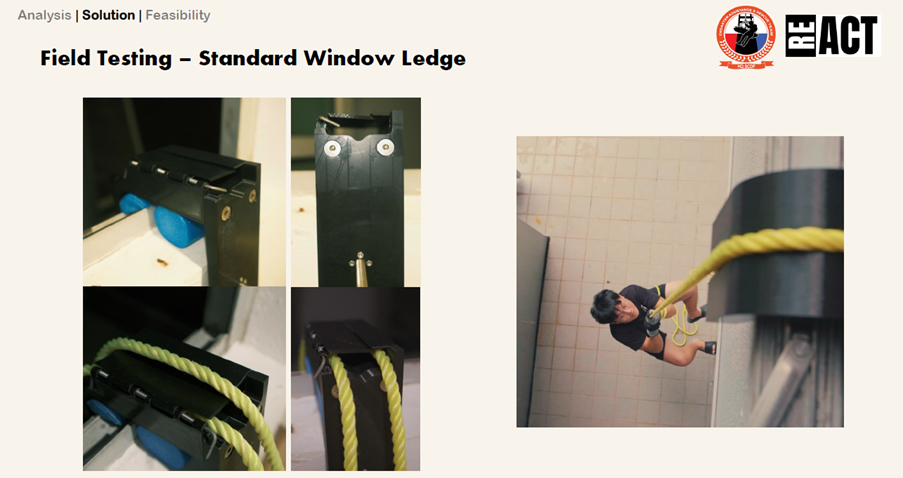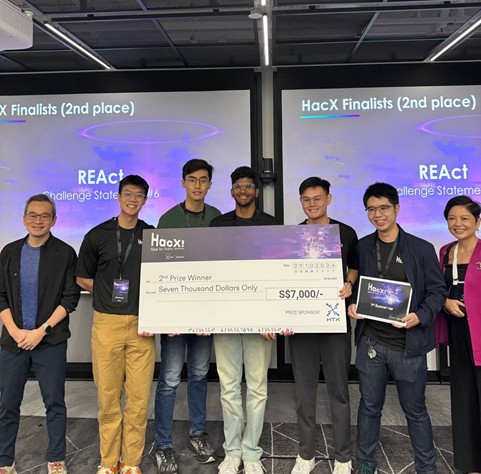 (Photo: HTX/Janna Giam)
(Photo: HTX/Janna Giam)
When third-year Computer Science undergraduate Sricharan Balasubramanian signed up for HacX!, he assumed he’d get to put his coding expertise to good use.
He didn’t expect to work with something very different instead: pool noodles, or the cylindrical pieces of polyethylene foam that one often sees kids playing with in swimming pools!
Sricharan tells us about his experience in the 2024 edition of HacX! and how that brought him to his current internship with HTX.
What drew you to HacX!?
I was doing an internship when my friend reached out, saying he would like to have some computer science specialists on his HacX! team. I also knew of seniors who had participated in previous editions of HacX! and their experience looked fruitful so I thought I’d give it a go!
What was your experience like?
It was very refreshing for someone like me, who predominantly works with code. My team’s challenge statement was more hardware-focused, so we spent a lot of time in our lab brainstorming how to design a physical prototype.
The nature of HacX! was also very different from other competitions I’ve participated in – it was held over a longer period. Several hackathons are held over one or two days, which can be overwhelming. I like having a proper sleep schedule, and the shorter hackathons really take a toll on you.
 Sricharan (front) poses with his HacX! teammates. (Photo: Sircharan Balasubramanian)
Sricharan (front) poses with his HacX! teammates. (Photo: Sircharan Balasubramanian)
What was your challenge statement?
Our challenge was to “eliminate collateral property damage from rescue operations”.
During height rescue operations, windows are commonly used as anchor points for ropes. However, due to the force applied, the ropes may damage the window frames. Sharp edges from the damaged frames may in turn damage the ropes and put rescuers in danger.
What was your proposed solution?
My team created NoodleGuard to help the Singapore Civil Defence Force (SCDF) perform their rapid operations in a safer manner while reducing damage to window railings, especially when the officers launch themselves off.
We created a few prototypes and explored different materials and eventually landed on pool noodles, which easily wrap around the irregular protrusions along the window frames.
There was a lot of design thinking involved, and we had to activate skillsets that didn’t involve algorithms or programming.
But the biggest appeal of our idea? It was low-cost!
 A prototype and field test of the NoodleGuard which Sricharan’s team pitched in HacX!. (Photos: REAct)
A prototype and field test of the NoodleGuard which Sricharan’s team pitched in HacX!. (Photos: REAct)
What about HacX! stood out for you?
Firstly, the challenge statements were very specific, which is great when solving engineering problems as you know the exact pain points you need to address.
We even got the chance to talk to the SCDF users to learn about their operations, pain points, and current solutions, and this made it all very meaningful.
It was nice to see these professionals take us students seriously and not treat our solution like it was just a fun project. That level of collaboration and feedback was very valuable – it was a real-world engineering experience.
It was so cool that the Disaster Assistance and Rescue Team (DART) team also trusted us enough to jump off a building using our contraption to test it out!
What were your key takeaways?
It’s important to constantly maintain feedback loops with the intended user. In software, you can make edits easily, but with hardware, it’s time-consuming and expensive. Communicating with users helps ensure your solution is useful and targeted.
It also builds a sense of community! When you pitch, you’re not just showing off your own work, but something co-created with your user.
Did you expect to win second place?
It was pretty surprising. There were really good teams in the finals and we didn’t expect to get second place.
 Sricharan’s HacX! team, REAct, walks away with the second prize! (Photo: Sricharan Balasubramanian)
Sricharan’s HacX! team, REAct, walks away with the second prize! (Photo: Sricharan Balasubramanian)
Why did you decide to become an intern with HTX?
I wanted to explore technical work and see if it is something I can forge a career in.
At HTX, I get to work on exciting solutions, like a capability development project using multimodal language models to control robots.
For example, in the case of a burning building, a user could simply type, “Grab the door handle,” and a robot would be able to identify the target, navigate its way through the fire and interact with it.
Imagine this in the context of the Home Team’s firefighting or rescue operations. Sending robots into dangerous situations would allow Home Team officers to conduct operations effectively while staying out of harm’s way.
In software, it’s sometimes hard to see the impact of your work. But here, it’s very clear – I’m working on something that could help the Home Team. The receptive and collaborative nature of the Home Team users also makes it fulfilling.
What about working in HTX stands out to you?
It’s relaxed, in a good way. People are understanding and collaborative. If I need help with something, I can just ask someone and they’re willing to help, even if they’re from another team.
What do you hope for HTX moving forward?
Honestly, I didn’t know much about HTX before HacX!. But now that I’ve been here, I think the projects are amazing and meaningful as they help the Home Team.
I wish that more people, especially Computer Science students, will be inspired by the work that HTX is doing for Singapore’s public safety!
We are always seeking inquisitive and innovative individuals to co-create extraordinary solutions with us.
Join us to be at the forefront of the finest tech capabilities in the field! Join Us

